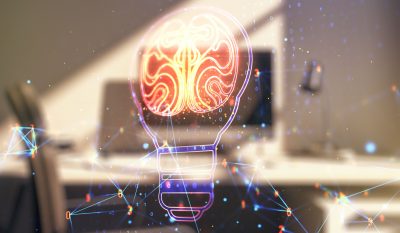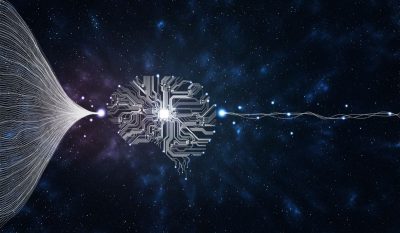Highlights:
- Machine learning is used in data science for data analysis and extracting valuable insights from data.
- Artificial Intelligence and machine learning are ruling the market. They obscure all facets of data science, including business intelligence and data analytics.
Machine Learning has been around for a very long time and has been existing even before we came to realize it. Machine learning has altered how data extraction and interpretation are performed via automatic sets of general procedures.
Machine learning is one of the many domains covered by data science. Data science consists of many fields and techniques, such as statistics, Artificial Intelligence (AI), to draw meaningful insights. While analysts derived insights from their firm’s data, data scientists used data to generate algorithms, AI and machine learning models. The former focused more on addressing bigger business challenges, and the latter strived to solve particular problems. But things have changed now. What’s gaining traction today is the capability to apply mathematical calculations to big data quickly and automatically.
Together, data science and machine learning are working hand-in-hand to revolutionize how we live and are working toward a single goal: Discovering new insights to help businesses grow. Today, businesses want to derive maximum value from data, and the fusion of analytics and data science allows them to gain a more comprehensive perspective of their organization.
In this blog, we will deliberate how Machine Learning is used in data science for data analysis and extracting valuable insights from data.
Applications of Machine Learning in Data Science
Listed below are some of the most prevalent applications of machine learning in data science:
Real-time navigation: A well-known real-time navigation app is Google Maps. But have you ever questioned why, while in heavy traffic, you’re still able to take the quickest route? This is made possible, all thanks to data being used by people using the app and the database of historical traffic data. Each user who uses this app helps increase the accuracy of the software. When someone launches the app, it sends all the information about their journey and traffic patterns to Google. The regular information sent by users using the application has allowed Google to build a vast database of traffic data, enabling Google Maps to track the traffic at a particular instance and predict what will happen if you follow the same course.
Image recognition: Image recognition is the most common application of machine learning in data science. It is commonly used to identify objects, persons, places, etc. The most common applications of this software are Facebook’s automatic friend tagging suggestions and face recognition on smartphones.
Product recommendation: Product recommendations are extensively used by e-commerce companies such as Amazon, Netflix, Hotstar, etc. They employ Machine Learning algorithms on collected data to recommend products or services that a user may be interested in.
Speech Recognition: Simply put, speech recognition refers to the process of translating spoken utterances into text. This text can come in the form of words, syllables, sub-word units, or even characters. Popular examples include Siri, Google Assistant, Youtube Closed Captioning, etc.
How Will Data Science Evolve with the Rising Popularity of Machine Learning in the Industry?
As we mentioned above, Machine Learning and data science work in tandem. The definition of machine learning itself says, “the ability of a machine to generalize knowledge from data.” Data is fundamental to machines since they can learn very little without it. Machine Learning will continue to offer a catalyzing effect to give data science a push to enhance relevance. The effectiveness of Machine Learning depends on the available data and the algorithms’ ability to exploit it. In the future, data scientists will be expected to have a rudimentary understanding of Machine Learning. One of the most important data science competencies is the ability to assess Machine Learning. Data science lacks the understanding of how non-standard problems can be solved and why they occur, which is where machine learning comes into play.
Role of Machine Learning in Data Science
Artificial Intelligence and Machine Learning are ruling the market, obscuring all facets of data science, including business intelligence and data analytics. Machine learning automatically analyses greater chunks of data. It automates the data analysis process and makes data-informed predictions without human intervention. The data science lifecycle happens when machine learning methods are applied.
The data model, too, is built automatically and is trained to make predictions in real-time. The data that will be analyzed is first fed into the machine learning process. Next, the specific characteristics of the model are defined, and a data model is constructed as a result. A dataset that was first given into the data model is used to train it. The next time you upload a new dataset, the Machine Learning algorithm will be prepared to predict after the model has been trained.
Now let’s discuss the various algorithms of machine learning in data science.
Machine Learning Use Cases in Data Science
When you have the dataset ready, you can classify the problem into three types:
Regression: Regression is utilized when the output variable is in a continuous space. It’s more about finding the equation of a curve that best fits the data points, and once you know the equation, you can anticipate the output values in accordance with it. Linear regression, perceptron, and neural networks are some well-known regression techniques. Financial forecasts for the stock market and housing prices frequently employ regression.
Classification: Classification is used when the output variables are discrete values. When trying to identify the category to which your data belongs, classification is a problem. The goal of classification algorithms is to assist you in predicting the class or category of incoming data by examining current data. Classification is more like looking for curves that separate the data points into different classes or categories. Some famous classification algorithms are Support Vector Machines, Neural Networks, Naïve Bayes, Logistic Regression, and the K Nearest Neighbour.
Clustering: It is a clustering challenge if you just wish to group data points with similar features without assigning labels. Typically, similar data points are grouped together in the same cluster based on various definitions of similarity. The points in various clusters should be as diverse from one another as possible. The clustering Algorithms search for patterns in datasets without assigning labels to anything. Some of the famous clustering algorithms are K-Means Clustering and Agglomerative
This algorithm is also used to cluster buying behaviour of customers. While clustering falls under the Unsupervised Learning Model, regression and classification come under the Supervised Learning Model of Machine Learning.
Conclusion
Companies place a strong emphasis on utilizing data to enhance their products. Without machine learning, data science is just data analysis. As we realized above, data science and machine learning go hand in hand. Machine Learning makes the job of the data scientist easier by automating duties. Data scientists must thoroughly understand machine learning as it will play a significant role in the future of data.









